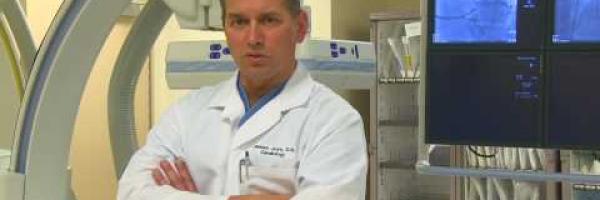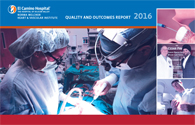Peripheral Artery Disease
The buildup of plaque —a substance made up of fat, cholesterol and other materials — is called atherosclerosis. Over time, the plaque can harden and narrow your arteries, limiting blood flow.
Most often, PAD affects the arteries in your legs, but it can affect the arteries that carry blood to your brain (carotid arteries), arms, stomach and kidneys. The disease is serious because it's one of the most significant risk factors for heart attack and stroke. And, reduced circulation in your legs can lead to infections, tissue death and even become limb threatening in the most severe cases.
Prevention
By taking action to control the risk factors for PAD, you can prevent the disease and its complications. You should:
- Know your family health history. If someone in your family has the disease, let your doctor know.
- If you smoke, quit. Smoking is the primary risk factor for PAD. If you smoke or have a history of smoking, your risk for developing PAD is four times greater.
- Follow a healthy diet. Eat plenty of fresh vegetables, fruits and whole grains, and choose lean meats and dairy products. Avoid saturated and trans fats, cholesterol, salt and added sugar.
- Exercise regularly and maintain a healthy weight. Getting regular exercise not only helps control your weight, it improves your health overall. Talk to your doctor about an exercise and weight-loss plan that's appropriate for you.
Need help to quit smoking or lose weight? We can help. At the Norma Melchor Heart & Vascular Institute at El Camino Health, we offer a variety of classes and programs that can help you improve your health and reduce your risk of peripheral artery disease, heart disease and stroke.
Symptoms
In the early stages, common symptoms of poor leg circulation are cramping, fatigue, heaviness, and pain or discomfort in the buttocks, thighs, calves and feet when you walk or climb stairs. The symptoms usually go away when you rest.
Called “intermittent claudication,” this occurs because during activity, your muscles require more blood flow. When your vessels are narrowed or blocked, your muscles don't get enough blood, which causes the symptoms. When you rest, your muscles need less blood flow, so your symptoms go away.
Diagnosis
Your doctor can diagnose PAD using a simple test called an ankle-brachial index (ABI). The test compares the blood pressure in your ankle to the blood pressure in your arm, which shows how well blood is flowing in your limbs. Although it can show whether PAD is affecting your limbs, it can't show which vessels are narrowed or by how much.
At El Camino Health, our vascular specialists use a variety of diagnostic exams to determine the extent of PAD and plan treatment, including:
- Ultrasound – To examine blood flow in the major arteries and veins in your arms and legs.
- Treadmill testing – To show the severity of symptoms and level of activity that brings on symptoms.
- Angiography – To show the location and severity of a blocked blood vessel.
Treatment
Peripheral artery disease can be treated with lifestyle changes, medicines and surgery, depending on the severity of your condition. Your doctor will recommend several lifestyle modifications to prevent complications of PAD, such as quitting smoking, eating a heart-healthy diet, lowering cholesterol and blood pressure, and exercising regularly. He or she may also prescribe medicine to lower blood pressure or cholesterol, prevent blood clots or help ease leg pain.
At El Camino Health, our vascular specialists can offer the latest minimally invasive peripheral vascular techniques in our cardiac catheterization lab — which only require a small incision and don’t require an overnight stay in the hospital. Our experts specialize in restoring blood flow using the most advanced limb-saving techniques.

